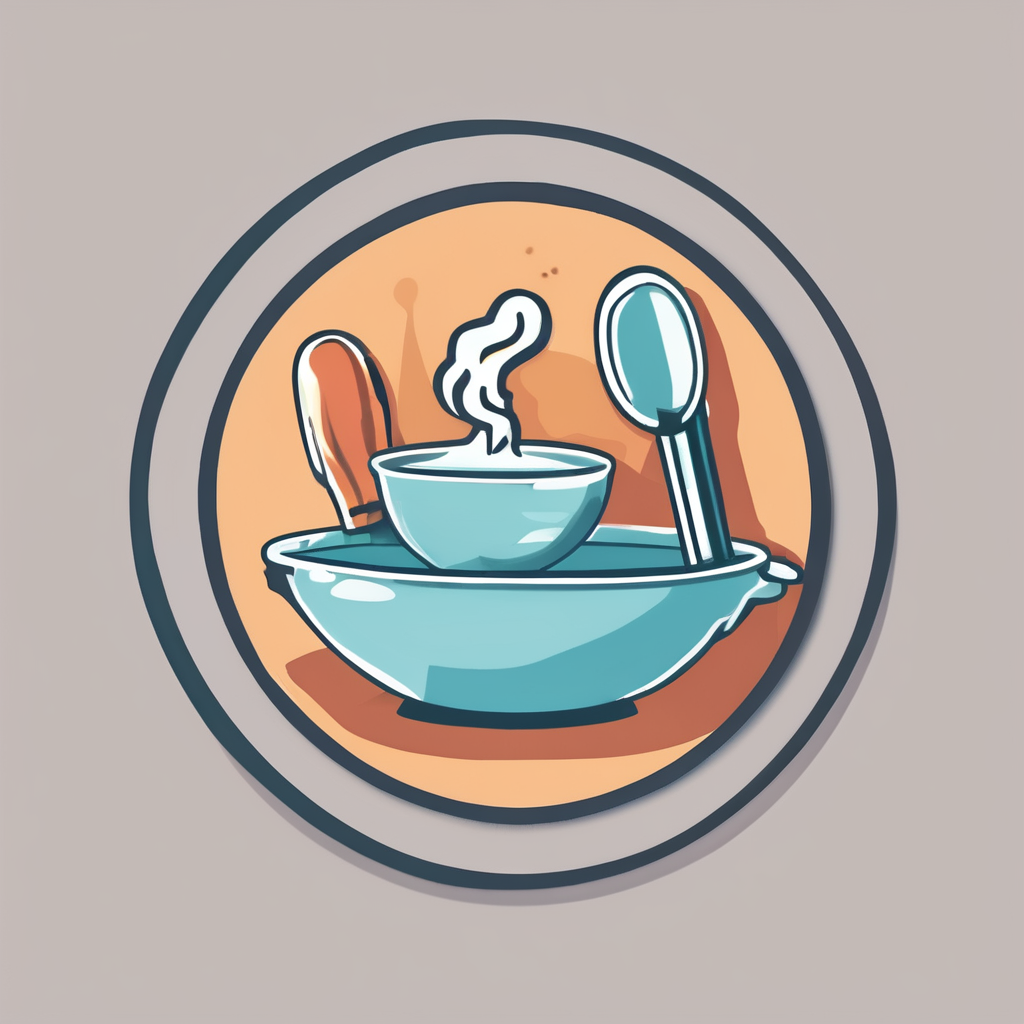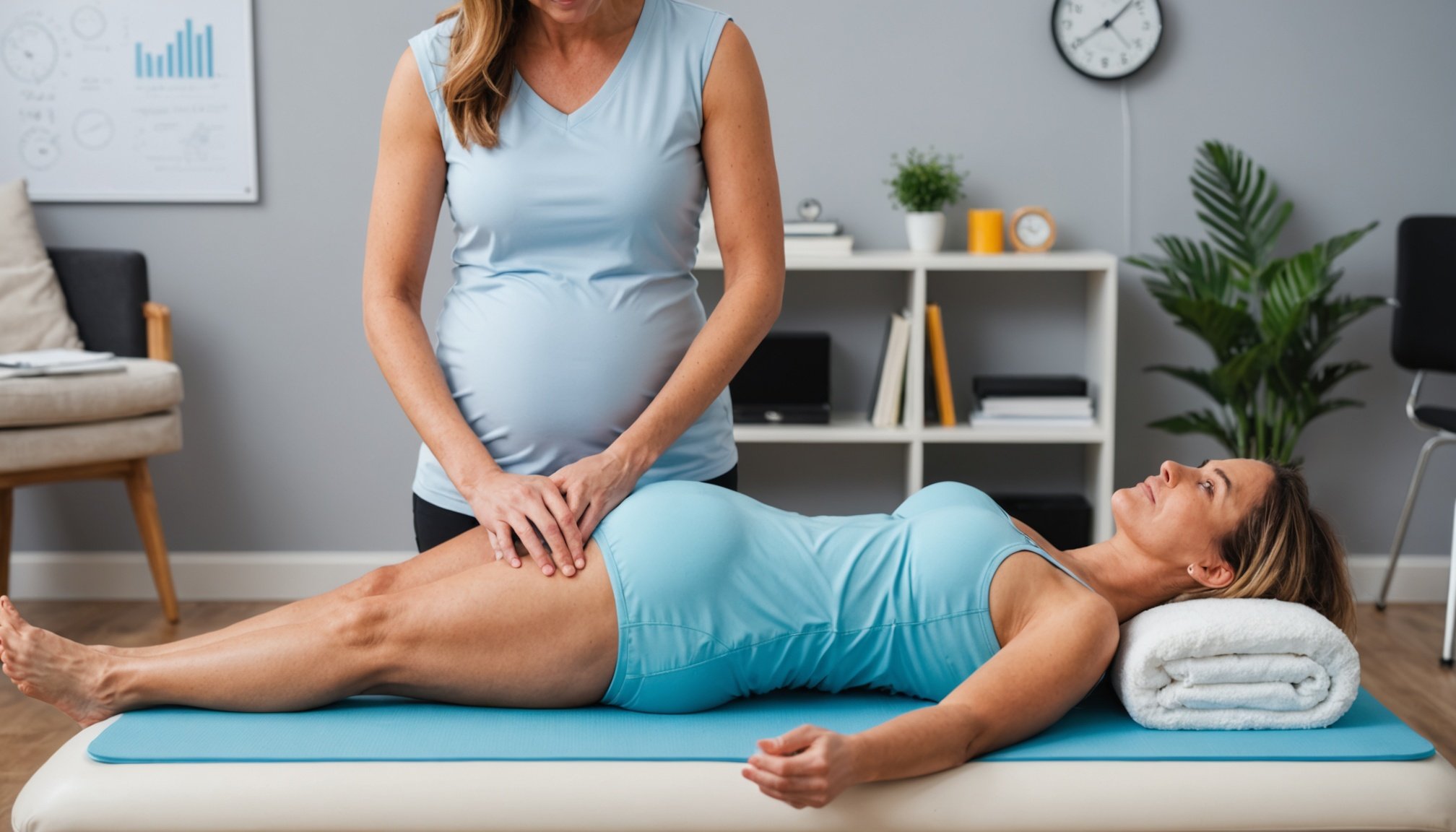Empowering UK Women: A Guide to Alleviating Pregnancy-Related Sciatica with Physical Therapy
Understanding Pregnancy-Related Sciatica
Pregnancy is a beautiful and transformative journey, but it can also come with its share of physical challenges. One of the most common complaints among pregnant women is sciatica, a type of pain that radiates from the lower back down to the legs. This condition is often caused by the pressure of the growing uterus on the sciatic nerve, as well as changes in posture and pelvic alignment.
“Sciatica during pregnancy can be really debilitating,” says Dr. Jane Smith, a physiotherapist at Perfect Balance Clinic. “However, with the right treatment and support, women can find significant relief and maintain their health and wellbeing throughout their pregnancy.”
Have you seen this : Essential Strategies for UK Pregnant Women to Navigate Emotional Turmoil in the First Year After Childbirth
The Role of Physiotherapy in Pain Relief
Physiotherapy is a highly effective treatment for pregnancy-related sciatica. It involves a range of techniques and exercises designed to alleviate pain, improve mobility, and strengthen the muscles that support the back and pelvis.
Key Physiotherapy Techniques
-
Pelvic Floor Exercises: Strengthening the pelvic floor muscles can help support the uterus and reduce pressure on the sciatic nerve. These exercises, often referred to as Kegel exercises, are simple yet highly effective.
Topic to read : Empowering UK Women: Tailored Dietary Strategies for Successfully Managing Gestational Diabetes
-
How to Do Kegel Exercises:
- Squeeze your pelvic muscles as if you are trying to stop the flow of urine.
- Hold for 5-10 seconds.
- Release for 10 seconds.
- Repeat for 10-15 repetitions, 3-4 times a day.
-
Postural Correction: Maintaining good posture can help reduce the strain on the back and pelvis. Physiotherapists can provide guidance on how to stand, sit, and move in ways that minimize pressure on the sciatic nerve.
-
Tips for Good Posture:
- Stand with your feet shoulder-width apart.
- Keep your shoulders back and your head level.
- Avoid slouching or leaning forward.
-
Massage Therapy: Massage, including sports massage and pregnancy massage, can help relax tense muscles and improve blood flow, which can be particularly beneficial for pregnant women experiencing sciatica.
Osteopathy and Its Benefits
Osteopathy is another highly recommended treatment for pregnancy-related sciatica. Osteopaths use holistic, hands-on techniques to restore balance to the body and alleviate pain.
How Osteopathy Helps
-
Manual Therapy: Osteopaths use manual techniques such as manipulation and mobilization to improve joint mobility and reduce muscle tension.
-
“Osteopathy can really help in releasing the tension in the lower back and pelvis, which is often the root cause of sciatica during pregnancy,” explains an osteopath from Body Unity.
-
Cranial Osteopathy: This gentle technique can be particularly beneficial for pregnant women, as it helps in relieving stress and promoting overall wellbeing.
-
Benefits of Cranial Osteopathy:
- Reduces stress and anxiety.
- Improves sleep quality.
- Enhances overall physical and emotional wellbeing.
Support and Rehabilitation
In addition to physiotherapy and osteopathy, there are several other ways to support and rehabilitate the body during pregnancy.
Pregnancy-Specific Support
-
Pregnancy Massage: This type of massage is tailored to the needs of pregnant women, focusing on areas that are most affected by pregnancy, such as the back, pelvis, and legs.
-
Benefits of Pregnancy Massage:
- Reduces back and pelvic pain.
- Improves circulation and reduces swelling.
- Enhances overall relaxation and wellbeing.
-
Pregnancy Pilates: Modified Pilates exercises can help strengthen the core and pelvic floor muscles, providing additional support and stability.
-
Tips for Pregnancy Pilates:
- Focus on gentle, controlled movements.
- Avoid any exercises that cause discomfort or pain.
- Practice breathing techniques to enhance relaxation.
Practical Insights and Actionable Advice
Here are some practical tips and advice for pregnant women experiencing sciatica:
Daily Tips for Managing Sciatica
-
Stay Active: Gentle exercises like walking and swimming can help maintain mobility and reduce pain.
-
“Staying active is crucial during pregnancy. It helps in maintaining flexibility and reducing the risk of complications,” advises a physiotherapist from Ergotec Health Studio.
-
Use Proper Support: Using a pregnancy support belt or kinesiology tape can provide additional support and relief.
-
Benefits of Kinesiology Tape:
- Provides continuous support without restricting movement.
- Can be worn discreetly under clothing.
- Helps in alleviating back and pelvic pain.
-
Maintain a Healthy Diet: Eating a balanced diet rich in nutrients can help support overall health and wellbeing.
-
Nutritional Tips:
- Include foods high in omega-3 fatty acids to reduce inflammation.
- Eat foods rich in calcium and vitamin D to support bone health.
- Stay hydrated by drinking plenty of water.
Long-Term Health and Wellbeing
The goal of any treatment during pregnancy should be long-term health and wellbeing, not just temporary pain relief.
Long-Term Benefits of Physiotherapy and Osteopathy
-
Preventative Health: Regular physiotherapy and osteopathy sessions can help prevent future episodes of sciatica and other musculoskeletal issues.
-
“By addressing the root cause of the pain and improving overall physical health, we can help women maintain a pain-free lifestyle long after pregnancy,” says Dr. Jane Smith.
-
Post-Natal Care: Continuing with physiotherapy and osteopathy post-natally can help in the recovery process and support the body as it returns to its pre-pregnancy state.
-
Post-Natal Physiotherapy:
- Helps in healing and strengthening the pelvic floor muscles.
- Supports the body in recovering from childbirth.
- Enhances overall physical and emotional wellbeing.
Patient Testimonials and Success Stories
Real-life testimonials from patients can provide valuable insights into the effectiveness of these treatments.
Success Stories
-
“I was experiencing severe sciatica during my pregnancy, but after starting physiotherapy and osteopathy, I felt a significant reduction in pain. The treatments really helped me manage my symptoms and maintain my health throughout my pregnancy,” says Sarah, a patient at Perfect Balance Clinic.
-
“The pregnancy massage and Pilates classes at Body Unity were a game-changer for me. They helped me stay active and comfortable, even in the later stages of my pregnancy,” shares Emily, another satisfied patient.
Comparative Table: Physiotherapy vs Osteopathy for Pregnancy-Related Sciatica
| Treatment | Techniques | Benefits | Suitability |
|---|---|---|---|
| Physiotherapy | Pelvic floor exercises, postural correction, massage therapy | Reduces pain, improves mobility, strengthens muscles | Highly recommended for pregnant women with sciatica |
| Osteopathy | Manual therapy, cranial osteopathy | Restores balance, alleviates pain, promotes overall wellbeing | Gentle and safe for pregnant women, especially beneficial for stress relief |
| Pregnancy Massage | Tailored massage techniques | Reduces back and pelvic pain, improves circulation, enhances relaxation | Ideal for pregnant women looking for a holistic approach to pain relief |
| Pregnancy Pilates | Modified Pilates exercises | Strengthens core and pelvic floor muscles, improves flexibility | Suitable for pregnant women at all stages of pregnancy |
Pregnancy-related sciatica is a common issue, but it doesn’t have to be debilitating. With the right combination of physiotherapy, osteopathy, and supportive treatments, women can find significant pain relief and maintain their health and wellbeing throughout their pregnancy.
“Empowering women with the knowledge and tools to manage their health during pregnancy is our top priority,” concludes Dr. Jane Smith. “By choosing the right treatments and maintaining an active, healthy lifestyle, women can have a great experience and feel their best, even during the most challenging times.”
Whether you’re experiencing mild discomfort or severe pain, there are highly effective treatments available that can help you feel better and live a pain-free life. So, take the first step today and empower yourself with the knowledge and support you need to thrive during your pregnancy.











